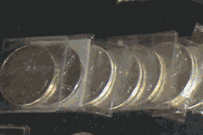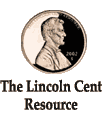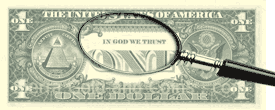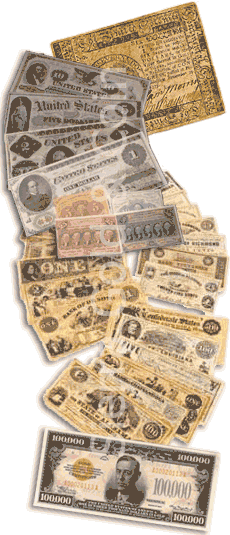

 |
|---|
 |
 |
 |
 |
 |
 |
 |
 |
|
|---|---|
 |
 |
 |
|
 |
|
 |
|
Articles
Index of Articles:
• United States Wasn't First To Use "In God We Trust" Motto
• The Other Coin: Paper Money
United States Wasn't First to Use 'In God We Trust' Motto
By Alan Herbert, Coins Magazine
Used with permission of the author Alan Herbert, Current Board of Governor Member of the ANA, Author of many articles in as many Numismatic magazines, Thank you Alan!
 The motto "IN GOD WE TRUST" has over the years become seemingly an automatic adjunct of our coinage. It is not without controversy, oddly in both directions. New collectors are aghast when they find a coin without the motto, while even a president directed its removal. I've assembled a few of the conceptions and misconceptions surrounding it. The precedent for use of the motto "IN GOD WE TRUST" on our paper money and coins came when the Continental Congress authorized "DEUS REGNAT EXULTET TERRA," ("God reigns, let the World rejoice"). One of the first religious mottoes was "IN GOD IS OUR TRUST," which appeared on the $100 Interest Bearing Note of March 3, 1863. It's part of a line from one of the later stanzas of the "Star Spangled Banner."
The motto "IN GOD WE TRUST" has over the years become seemingly an automatic adjunct of our coinage. It is not without controversy, oddly in both directions. New collectors are aghast when they find a coin without the motto, while even a president directed its removal. I've assembled a few of the conceptions and misconceptions surrounding it. The precedent for use of the motto "IN GOD WE TRUST" on our paper money and coins came when the Continental Congress authorized "DEUS REGNAT EXULTET TERRA," ("God reigns, let the World rejoice"). One of the first religious mottoes was "IN GOD IS OUR TRUST," which appeared on the $100 Interest Bearing Note of March 3, 1863. It's part of a line from one of the later stanzas of the "Star Spangled Banner."
The religious motto was not a legal requirement until the 1950's. Even then, laws for new coins could opt out of its use. In several instances among our commemorative coins, the motto would have cluttered an already jammed-up design. Although the motto has been missing from several commemoratives, it was the gold $10 and $20 coins that attracted the most attention. President Theodore Roosevelt did not want "IN GOD WE TRUST" on our coinage. He had it dropped in 1907, pointing out there was no law requiring it, and in a letter to William Bodly he said, "My own feeling in the matter is due to my very firm conviction that to put such a motto on coins, or to use it in any kindred manner, not only does no good but does positive harm, and is in effect irreverence which comes dangerously close to sacrilege." An Act of Congress restored it to late 1908 production.
The minister who proposed a religious motto prevailed. Rev. Mark Richards Watkinson of Pennsylvania, wrote Treasury Secretary Salmon P. Chase, in 1861, suggesting "GOD LIBERTY LAW." Chase agreed to the idea, but it was not made law until July 11, 1955.
There was a lot of public outcry when the motto "IN GOD WE TRUST" was omitted from the 1907 gold $10s and gold $20s but there was similar problem when the motto was first introduced. It may come as a surprise to learn that Case took a lot of heat when he had the motto placed on the new two-cent piece. It was inspired by the religious fervor surrounding the events of the Civil war, but many of the people in the North felt that it had no place on our coinage. We don't have a lock on the motto as it, or variations, appear on the coins of several other countries. The Netherlands Antilles 25 gulden of 1973 carries the words "DIOS KU NOS," which translates to "IN GOD WE TRUST." Nicaragua has used the slogan on most of its larger modern coins. It is written in Spanish, "En Dios Confiamos," which translates literally to "In God We Trust." Numerous other countries use a similar motto.
Our paper money has added to the confusion because the series date on our notes does not indicate the year they were produced. This leads to frequent questions from collectors unfamiliar with the situation. The motto first appeared on our paper money on the 1886 $5 Silver certificates. The backs of the notes carry five Morgan dollars, four reverse and one obverse, with the 1886 date. Clearly visible on the engraving of the coins is the motto, with TRUST spelled TRAST on one of the reverses. The official date for the motto is in the middle of the 1935-G series $1 Silver Certificates, printed in 1957.
The Other Coin: Paper Money
By Mr. David Elliot
Used with express permission of Mr. David Elliott, President/Editor of the Reno Coin Club, Nevada (www.renocoinclub.org). Thank you Mr. Elliott!
Paper money or banknotes is a collecting area of increasing popularity as the vividness of designs and variety of topics has grow. After all you can put anything on a piece of paper. Paper money has been reluctantly accepted as the money has no intrinsic value and is often considered fiat money, contributing to inflation. Germany, Russia, Turkey, Yugoslavia and recently Zimbabwe and several other African nations have had to issue notes in the hundreds of billions or trillions as inflation ravished their countries (see below).
The first paper banknotes appeared in China about 806 AD for letters of credit transferred over large distances. The first real use of a paper money system was for about 300 years of a 400 year period between 1050 and 1450. Marco Polo noted its use. The Bank of England began issuing notes in 1694, following the practice of goldsmiths and local banks. Paper currency was adopted throughout Europe and the US in the 17th century.
 In desperation and needing to fund the new war with the French Colonies in Canada, an impoverished England first authorized the Massachusetts Bay Colony to print Bills of Credit in 1690. Thus, gradually in pre-Revolutionary America, each colony began to print its own form of currency. The first was issued by Rhode Island in 1710 with the other colonies following suit up to the Revolutionary war.
In desperation and needing to fund the new war with the French Colonies in Canada, an impoverished England first authorized the Massachusetts Bay Colony to print Bills of Credit in 1690. Thus, gradually in pre-Revolutionary America, each colony began to print its own form of currency. The first was issued by Rhode Island in 1710 with the other colonies following suit up to the Revolutionary war.
To finance the American revolution, and because the colonies were powerless to tax, the Continental Congress authorized the first actual American Currency on May 10, 1775. Not having bullion backing and easily counterfeited, continental notes were worth only 2 ½ cents to the dollar in 1780. Thus began the phrase, not worth a Continental (see left). By 1836, banks in the United States had swollen to over 1,600 in number. With scant regulation, these state-chartered, private banks ran wild issuing over 10,000 Variety Notes of various design, color and size.
During the Civil War, both the North as well as the South developed their own currency. Ripped apart by war and teetering on bankruptcy, Congress ordered the printing of a number of notes. These Large Size Notes were commonly called horse blankets because of their dimensions. In 1863 there still was a problem in stabilizing the value of our currency. Since over 75 percent of all bank deposits were held by nationally chartered banks, national Bank Notes backed by U.S. Government securities came into being. This lasted until until 1928. To create greater confidence in our currency, Gold Certificates were issued against U.S. Gold holdings by the Department of the Treasury from 1865 to 1922. Beginning 1878 and continuing through seven series, Large Size Silver Certificates stayed in circulation until 1923 with the smaller size remaining until this day. The Government stopped redeeming them for silver bullion on June 24, 1968. Starting with the reduction of currency size in 1929, the United States Government has minted over 1,200 issues of currency-Legal Tender Notes; Silver certificates; National Bank Notes; Federal Reserve Notes; World War II Emergency Notes; Gold Certificates; and Military payment certificates. Many of these varieties are being printed yet today. In 1990 a new series of notes was introduced to improve security and stay ahead of counterfeiters and advances in technology which make it easier to reproduce currency. These notes include microprinting and an embedded security strip.
There's a nice collection of US currency on the web by the Federal Reserve in San Francisco at http://www.frbsf.org/currency/index.html
![[Most Recent Quotes from www.kitco.com]](http://www.kitconet.com/charts/metals/gold/t24_au_en_usoz_2.gif)
![[Most Recent Quotes from www.kitco.com]](http://www.kitconet.com/charts/metals/silver/t24_ag_en_usoz_2.gif)
![[Most Recent Quotes from www.kitco.com]](http://www.kitconet.com/charts/metals/platinum/t24_pt_en_usoz_2.gif)
![[Most Recent Quotes from www.kitco.com]](http://www.kitconet.com/charts/metals/palladium/t24_pd_en_usoz_2.gif)
![]()